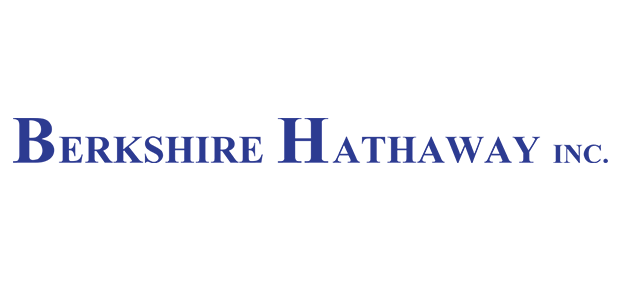Warren Buffett’s Berkshire Hathaway reported its second-quarter and half-year results on Friday, revealing an underwriting loss as a number of factors impacted profits at Buffett’s insurance and reinsurance divisions.
 Overall insurance underwriting fell to a -$22 million loss at Berkshire Hathaway, down from an underwriting profit of $337 million in the prior year quarter. For the first-half the underwriting loss is -$289 million, compared to an underwriting profit in H1 2016 of $550 million.
Overall insurance underwriting fell to a -$22 million loss at Berkshire Hathaway, down from an underwriting profit of $337 million in the prior year quarter. For the first-half the underwriting loss is -$289 million, compared to an underwriting profit in H1 2016 of $550 million.
The stark difference is down to a number of factors, ranging from an elevated amount of non-catastrophe storm losses, the impact of cyclone Debbie in Australia, strengthening of prior year reserves for a number of catastrophe events, an impact due to the Ogden Rate change in the UK and of course the effects of the AIG adverse development cover.
The insurance and reinsurance underwriting loss at Berkshire Hathaway was not expected, with the analysts consensus being that the unit would easily turn a profit. The underwriting result had the effect of reducing Berkshire’s overall operating income by around 11% year-on-year.
Around $400 million of losses were in the main related to the AIG adverse development coverage (ADC), that Berkshire Hathaway entered into with the insurer earlier this year.
At the time, analysts had mooted that the ADC transaction could have been the first reinsurance deal that Warren Buffett’s company had entered into that would be big enough to sink its underwriting profits. A forecast that has rung true so far in 2017.
But while the AIG deal severely dented the underwriting result, a combination of other losses and reserve charges has not helped, eroding Berkshire’s profitability perhaps more than would have been imagined, given the fact non of the losses have been particularly catastrophic.
Berkshire Hathaway Reinsurance Group drove most of the decline, with a 122.4% combined ratio and taking the charge from the AIG adverse development cover.
Around $215 million of Ogden Rate related losses were reported across the Berkshire reinsurance platform, while at the same time the group increased its ultimate net loss estimates for certain 2016 hurricane and earthquake loss events, adding to the underwriting decline.
Higher catastrophe losses from current year events also reflect an impact from weather phenomena such as the severe convective storm season in the United States.
In the Geico auto insurance arm a higher level of severity for certain losses saw loss and loss adjustment expenses increase $935 million in Q2 alone, and the units underwriting profit fell to $119 million, down from $150 million in the prior year quarter.
General Re reported a second-quarter underwriting gain of $25 million, beating the prior year, but for the first-half an underwriting loss of -$118 million reflected higher losses and the Ogden costs.
General Re’s property and casualty reinsurance operations recorded an underwriting loss in Q2 2017, taking around $140 million of loss due to the Ogden Rate change. General Re also recorded $50 million of losses due to cyclone Debbie in Australia.
General Re’s result was boosted by improved performance in the life and health segment, reporting an underwriting profit for Q2 and H1, both beating underwriting losses reported in the prior year.
At the Berkshire Hathaway Reinsurance Group the retroactive reinsurance losses dented Q2 by $331 million, while periodic annuity payment losses also knocked another $121 million off the result in this segment.
The property and casualty reinsurance business was profitable, but $250 million of losses due to reserve strengthening for prior year hurricane and earthquake events as well as the Ogden costs meant that profits were significantly down here as well, at $52 million in Q2 compared to $249 million in the prior year quarter.
The Berkshire Hathaway Reinsurance Group also suffered another $115 million of losses due to the impacts of cyclone Debbie in Australia.
On the positive side and reflecting Warren Buffett’s strategy of making both sides of the balance-sheet work for him, insurance and reinsurance investment income came in at $965 million, so overall the re/insurance business segments still delivered a handsome profit to Berkshire Hathaway.
This is the benefit of an investment oriented approach, putting the premium float to work in big investments and deals that can offset all but the worst underwriting performance.
Berkshire Hathaway’s float keeps growing, putting Warren Buffett in an admirable position when it comes to the ability to do large deals.
At the end of the first-half the Berkshire Hathaway float had grown to $107 billion, up from $91 billion at the end of 2016.
The jump in float is largely attributed to the adverse development cover agreement with AIG, as Berkshire took on significant reserves from the insurer.
This is why the charges coming through and driving the underwriting unit to a loss should not be looked on as a sign that the deal isn’t working out for Buffett. Over the term of the arrangement putting the float gained to work in investment opportunities is likely to far outweigh any negative impacts seen from the losses that flow through as part of the deal.
Of course there will also be an element of the soft reinsurance market visible in Berkshire’s results, and Buffett and his reinsurance chiefs cannot be complacent about the potential for this to erode underwriting performance over the longer term.


